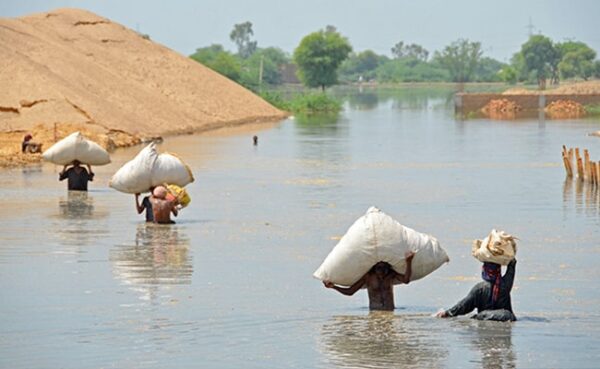
Estimated economic losses due to floods that have never occurred before in Pakistan have approached around USD 18 billion, an increase of USD 12.5 billion which was previously expected, as calculated by the center and supported by the province.
Agricultural growth faces a much worse impact after flooding. Disaster floods have destroyed plants at 8.25 million hectares compared to the initial assessment of 4.2 million hectares which increasingly increased economic losses, reporting News International.
Cotton, rice, and small plants have been badly damaged and if drying is not done properly, it can cause serious problems to sow wheat. Cotton plants have evaporated in most countries and now sowing wheat is under threat.
The Ministry of National Food Security has been assigned to produce a summary to increase the minimum price of wheat support for future plants.
The authorities have held a meeting with international donors and convinced them that Pakistan will place an effective monitoring and evaluation system to utilize each other and each pen to reduce flood losses in a transparent manner, report News International.
After increasing economic losses and reduced GDP growth, per capita income is projected to slow down. The government has imagined the GDP growth rate of 5 percent for the current fiscal year.
In addition, poverty and unemployment will increase from 21.9 percent to more than 36 percent. About 37 percent of the population was hit by poverty after flooding in 118 districts, as expected by the Pakistani government.
The high profile committee with representatives from the Ministry of Finance, the Ministry of Planning, the State Bank of Pakistan, FBR, Pide and others evaluated that poverty and unemployment had increased, up from 21.9 percent to more than 36 percent.
UN Secretary General Antonio Guterres on Friday landed in Pakistan on a two-day visit to take the stock of situations related to flooding and reveal solidarity with people who were hit by extreme monsoon rain.
The Head of the United Nations will hold a meeting with the leadership of Pakistan and senior officials to exchange views on national and global responses to this disaster caused by climate change, an official statement read.
Guterres will travel to the area most influenced by climate disasters in Pakistan. He will interact with abandoned families and the first respondent in the field, and oversee the work of the UN humanitarian response to support the rescue and efforts of government assistance for millions of people affected.
Meanwhile, when Pakistan fought with unprecedented floods, the World Health Organization (WHO) had also warned about the worsening crisis in a country that was damaged by a rain record.
“We followed carefully and with deep concern, the humanitarian crisis currently facing the Pakistani people as a result of destroying monsoon floods,” said Dr. Ahmed Al-Mandhari, a regional director for Eastern Mediterranean, about flooding in Pakistan.
In a press statement issued on September 5, Dr. Al-Mandhari said the current scale of damage and destruction due to flooding that was not seen before in Pakistan-as a result of long-term global climate change that led to more severe weather conditions.
According to the World Meteorological Organization (WMO), Pakistan faced one of the worst flood events in its history.
The government estimates that millions of people throughout the country are influenced by rain, floods and impacts such as landslides, destroying infrastructure, houses, agricultural land and livestock. Disaster floods so far claimed at least 1,325 people in Pakistan.
Human and socio-economic toll roads are expected to increase when the flood rate continues to increase, with great pressure on the country’s dams.
The Department of Meteorology Pakistan said that it was August wet since the record began in 1961. The national rainfall is 243 percent above average. In Balochistan Province, it is +590 percent and in Sindh +726 percent, according to monthly reports.






